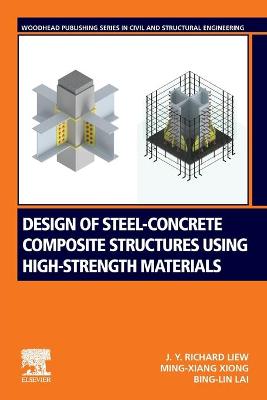Woodhead Publishing Series in Civil and Structural Engineering
1 total work
Design of Steel-Concrete Composite Structures Using High-Strength Materials
by J. Y. Richard Liew, Ming-Xiang Xiong, and Bing-Lin Lai
Published 12 August 2021
High-strength materials offer alternatives to frequently used materials for high-rise construction. A material of higher strength means a smaller member size is required to resist the design load. However, high-strength concrete is brittle, and high-strength thin steel plates are prone to local buckling. A solution to overcome such problems is to adopt a steel-concrete composite design in which concrete provides lateral restraint to steel plates against local buckling, and steel plates provide confinement to high-strength concrete.
Design of Steel-Concrete Composite Structures Using High Strength Materials provides guidance on the design of composite steel-concrete structures using combined high-strength concretes and steels. The book includes a database of over 2,500 test results on composite columns to evaluate design methods, and presents calculations to determine critical parameters affecting the strength and ductility of high-strength composite columns. Finally, the book proposes design methods for axial-moment interaction curves in composite columns. This allows a unified approach to the design of columns with normal- and high-strength steel concrete materials.
This book offers civil engineers, structural engineers, and researchers studying the mechanical performance of composite structures in the use of high-strength materials to design and construct advanced tall buildings.
Design of Steel-Concrete Composite Structures Using High Strength Materials provides guidance on the design of composite steel-concrete structures using combined high-strength concretes and steels. The book includes a database of over 2,500 test results on composite columns to evaluate design methods, and presents calculations to determine critical parameters affecting the strength and ductility of high-strength composite columns. Finally, the book proposes design methods for axial-moment interaction curves in composite columns. This allows a unified approach to the design of columns with normal- and high-strength steel concrete materials.
This book offers civil engineers, structural engineers, and researchers studying the mechanical performance of composite structures in the use of high-strength materials to design and construct advanced tall buildings.
